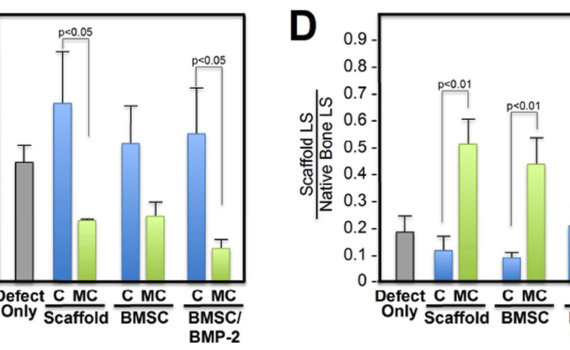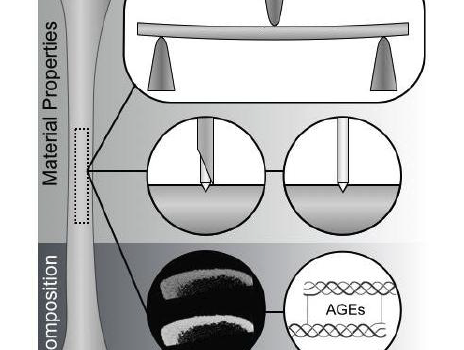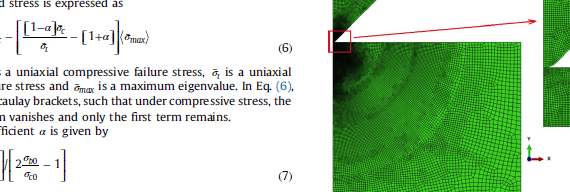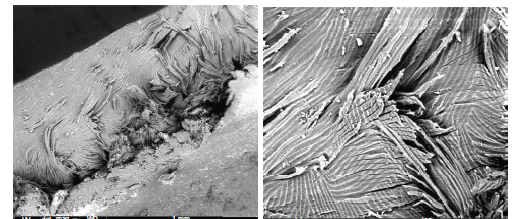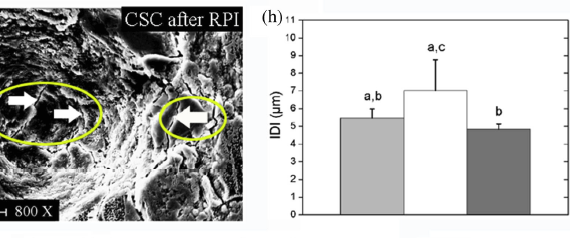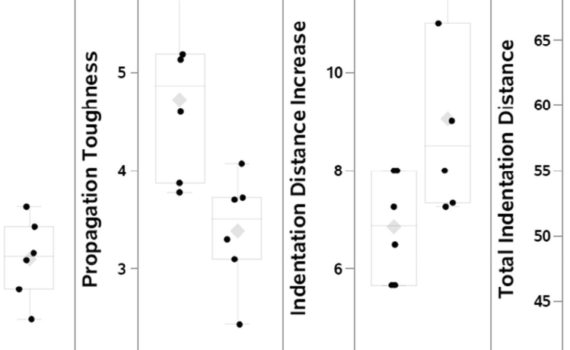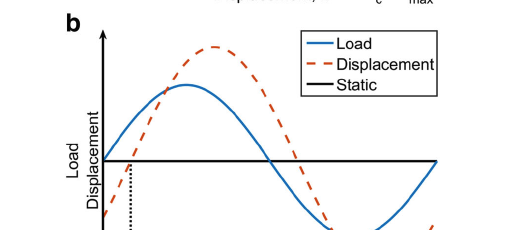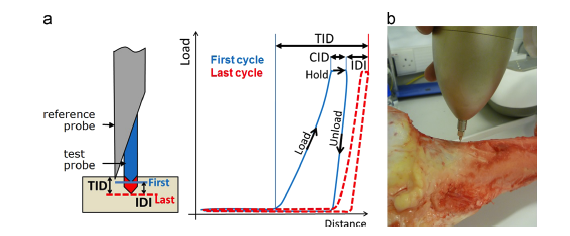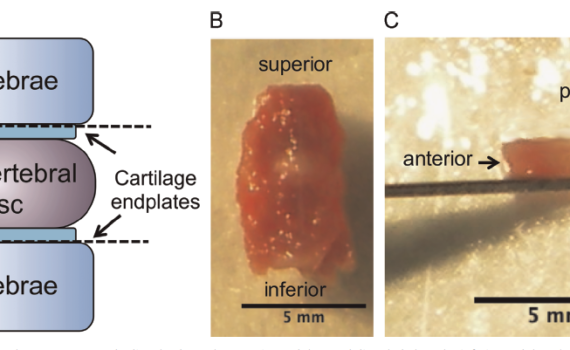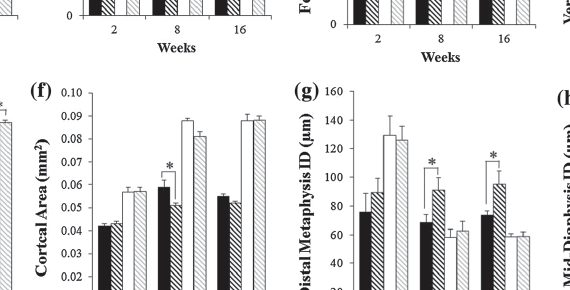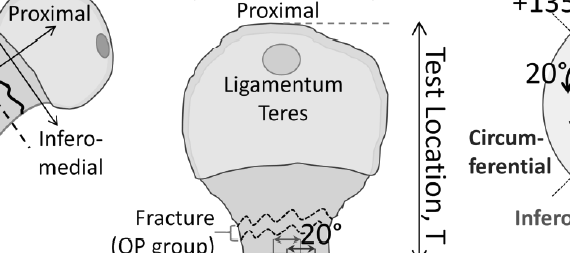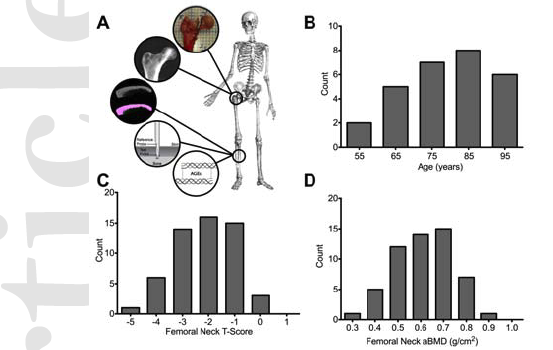Abstract Fracture non-unions and bone re-fracture are common challenges for post-fracture management. To achieve better prognosis and treatment evaluation, it is important to be able to assess the quality of callus over the time course of healing. This study evaluated the potential of spatially offset Raman spectroscopy for assessing the […]
Daily Archives: July 23, 2018
Abstract Gap junctions are formed from ubiquitously expressed proteins called connexins that allow the transfer of small signaling molecules between adjacent cells. Gap junctions are especially important for signaling between osteocytes and other bone cell types. The most abundant type of connexin in bone is connexin 43 (Cx43). The C-terminal […]
Abstract Current strategies for skeletal regeneration often require co-delivery of scaffold technologies, growth factors, and cellular material. However, isolation and expansion of stem cells can be time consuming, costly, and requires an additional procedure for harvest. Further, the introduction of supraphysiologic doses of growth factors may result in untoward clinical […]
Abstract The assessment of fracture risk often relies primarily on measuring bone mineral density, thereby accounting for only a single pathology: the loss of bone mass. However, bone’s ability to resist fracture is a result of its biphasic composition and hierarchical structure that imbue it with high strength and toughness. […]
Abstract Methionine restriction (MR) extends the lifespan of a wide variety of species, including rodents, drosophila, nematodes, and yeasts. MR has also been demonstrated to affect the overall growth of mice and rats. The objective of this study was to evaluate the effect of MR on bone structure in young […]
Abstract Reference Point Indentation (RPI) is a novel technique aimed to assess bone quality. Measurements are recorded by the BioDent instrument that applies multiple indents to the same location of cortical bone. Ten RPI parameters are obtained from the resulting force–displacement curves. Using the commercial finite element analysis software Abaqus, […]
Abstract Two hard botanical structures have been characterised in terms of mechanics and structure: the pseudofruit of Coix lacryma-jobi, a native plant of Southeast Asia, and the kernel of the drupe fruit of Thevetia peruviana, a native plant of tropical America. Two indentation techniques at different scales (micro and nano) were employed. […]
Abstract Caloric restriction (CR), protein restriction (PR), and specific amino acid restriction (e.g., methionine restriction (MR)) are different dietary interventions that have been confirmed with regard to their comprehensive benefits to metabolism and health. Based on bone densitometric measurements, weight loss induced by dietary restriction is known to be accompanied […]
Abstract Loading increases bone mass and strength in a site-specific manner; however, possible effects of loading on bone matrix composition have not been evaluated. Site-specific structural and material properties of mouse bone were analyzed on the macro- and micro/molecular scale in the presence and absence of axial loading. The response […]
Abstract Osteogenesis imperfecta entrains changes at every level in bone tissue, from the disorganization of the collagen molecules and mineral platelets within and between collagen fibrils to the macroarchitecture of the whole skeleton. Investigations using an array of sophisticated instruments at multiple scale levels have now determined many aspects of […]
Abstract Dual-energy X-ray absorptiometry (DXA) is generally a very useful tool for assessing bone mineral density (BMD) and fracture risk. However, observational studies have shown that in certain instances, BMD as measured by DXA systematically over- or underestimates fracture risk. We herein describe the clinical conundrums encountered when assessing fracture […]
Abstract Substantial evidence exists that in addition to the well-known complications of diabetes, increased fracture risk is an important morbidity. This risk is probably due to altered bone properties in diabetes. Circulating biochemical markers of bone turnover have been found to be decreased in type 2 diabetes (T2D) and may […]
Abstract The objective of this study was to elucidate micromechanical properties of Biodentine and two experimental calcium silicate cements (CSCs) using Reference Point Indentation (RPI). Biomechanical characteristics of the cement type and the effects of a radiopacifier, liquid components, acid etching treatment and bioactivation in simulated body fluid (SBF) were […]
Abstract Fractures, particularly at the lower extremities and hip, are a complication of diabetes. In both type 1 (T1D) and type 2 diabetes (T2D), fracture risk is disproportionately worse than that predicted from the measurement of bone mineral density. Although an explanation for this discrepancy is the presence of organic […]
Abstract Tissue-level mechanical properties characterize mechanical behavior independently of microscopic porosity. Specifically, quasi-static nanoindentation provides measurements of modulus (stiffness) and hardness (resistance to yielding) of tissue at the length scale of the lamella, while dynamic nanoindentation assesses time-dependent behavior in the form of storage modulus (stiffness), loss modulus (dampening), and […]
Another diagnostic method recently introduced into the human clinical setting to assess bone quality and fracture risk is reference point indentation (RPI). This novel bone indentation technique has been employed in preliminary studies to assess bone tissue mechanical properties in people, and has been shown to correlate with traditional mechanical […]
Abstract Reference Point Indentation (RPI) is a novel microindentation tool that has emerging clinical potential for the assessment of fracture risk as well as use as a laboratory tool for straight-forward mechanical characterisation of bone. Despite increasing use of the tool, little research is available to advise the set-up of […]
Abstract Reference Point Indentation (RPI) has been proposed as a new clinical tool to aid the diagnosis of Osteoporosis. This study has examined the performance of the tool within entire femurs to improve the understanding of the mechanical properties of bone and also to guide future RPI testing to optimize […]
Abstract Substantial evidence shows that skeletal fragility should be considered among the complications associated with type 2 diabetes. Individuals with type 2 diabetes have increased fracture risk, despite normal bone mineral density (BMD) and high BMI-factors that are generally protective against fractures. The mechanisms underlying skeletal fragility in diabetes are […]
Abstract Radiation therapy is widely used in the management of patients with soft tissue sarcoma, genitourinary and gastrointestinal tumors, head and neck tumors, or secondary bone metastasis. Bystander injury to bone in the course of external beam radiation therapy is a prevalent problem associated with considerable morbidity, including the development […]
Abstract Intervertebral disc (IVD) degeneration is highly correlated with lower back pain, and thus understanding the mechanisms of IVD degeneration is critical for the treatment of this disease. Utilizing mouse models to probe the mechanisms of degeneration is especially attractive due to the ease of manipulating mouse models and the […]
Abstract Skeletal fractures are considered a chronic complication of type 2 diabetes mellitus (T2DM), but the etiology of compromised bone quality that develops over time remains uncertain. This study investigated the concurrent alterations in metabolic and skeletal changes in two mouse strains, a responsive (C57BL/6) and a relatively resistant (C3H/HeJ) […]
Abstract Age-related fragility fractures are an enormous public health problem. Both acquisition of bone mass during growth and bone loss associated with ageing affect fracture risk late in life. The development of high-resolution peripheral quantitative CT (HRpQCT) has enabled in vivo assessment of changes in the microarchitecture of trabecular and […]
Abstract In contrast to traditional approaches to fracture risk assessment using clinical risk factors and bone mineral density (BMD), a new technique, reference point microindentation (RPI), permits direct assessment of bone quality; in vivo tibial RPI measurements appear to discriminate patients with a fragility fracture from controls. However, it is […]
Abstract The global trend towards increased longevity has resulted in ageing populations and a rise in diseases or conditions that primarily affect older persons. One such condition is osteoporosis (fragile or porous bones), which causes an increased fracture risk. Vertebral and hip fractures lead to increased morbidity and mortality and […]
Abstract The diagnosis of fracture risk relies almost solely on quantifying bone mass, yet bone strength is governed by factors at multiple scales including composition and structure that contribute to fracture resistance. Furthermore, aging and conditions such as diabetes mellitus alter fracture incidence independently of bone mass. Therefore, it is […]
Abstract Characterization of bone’s hierarchical structure in aging, disease and treatment conditions is imperative to understand the architectural and compositional modifications to the material and its mechanical integrity. Here, cortical bone sections from 30 female proximal femurs – a frequent fracture site – were rigorously assessed to characterize the osteocyte […]

